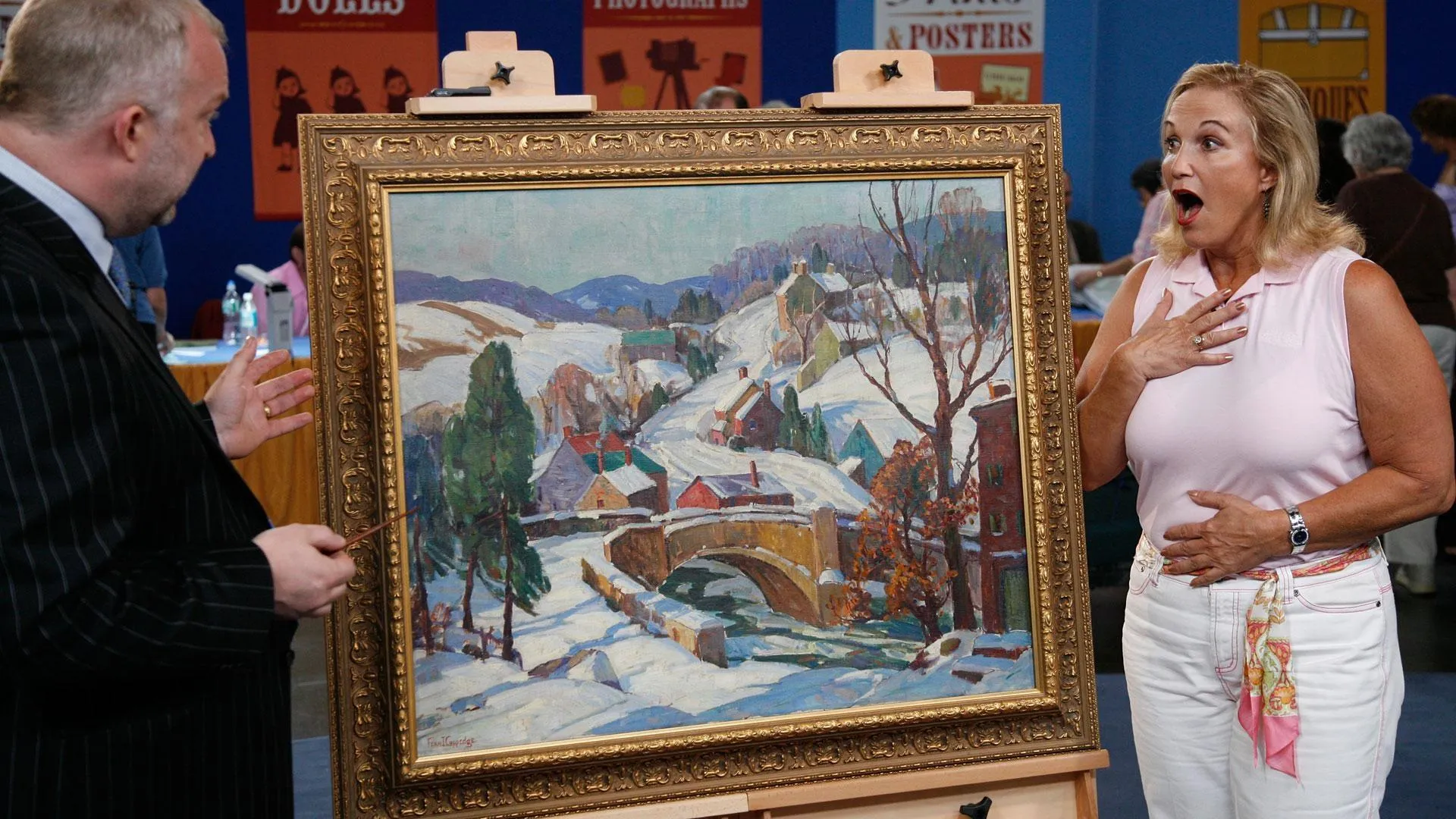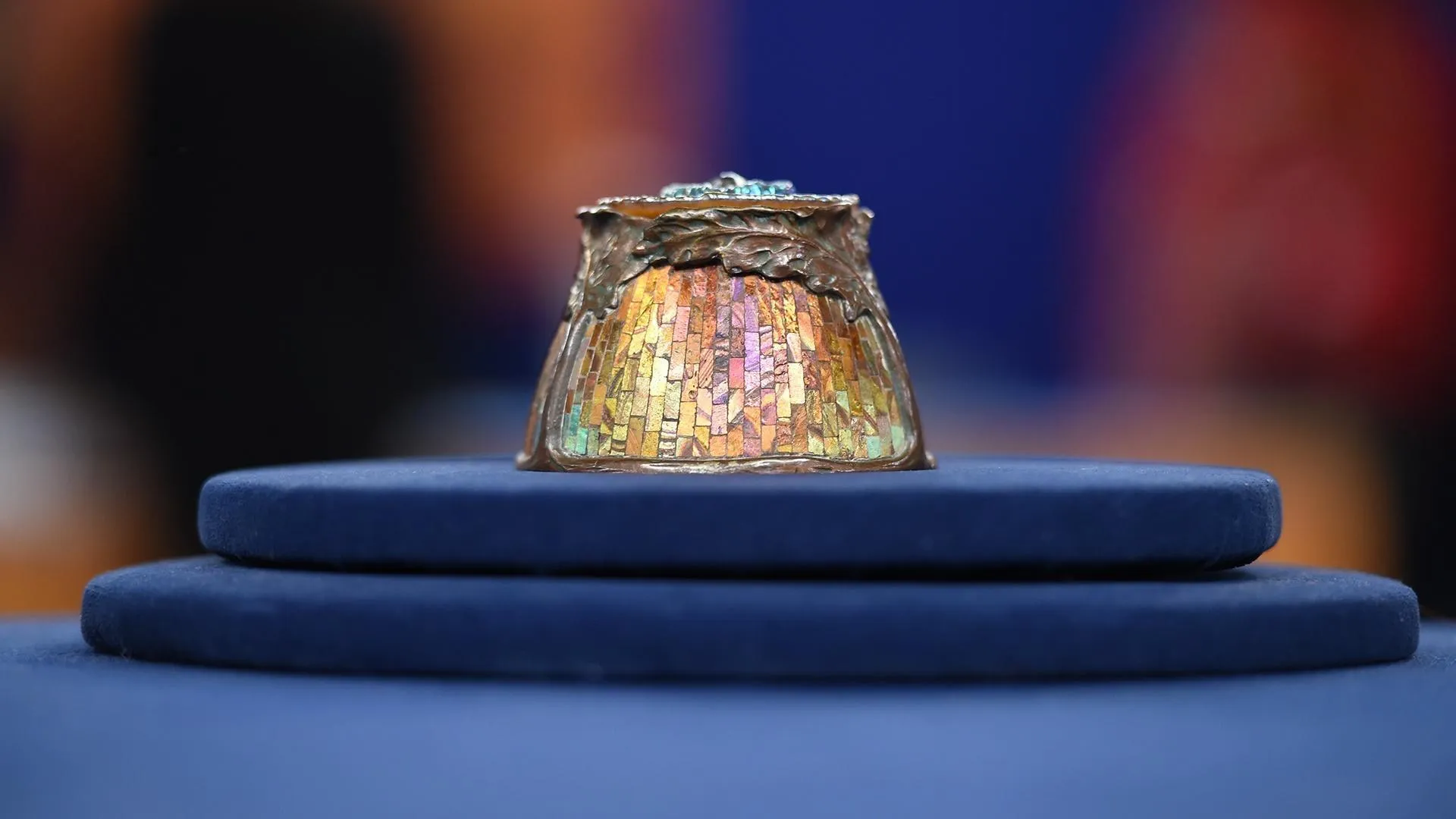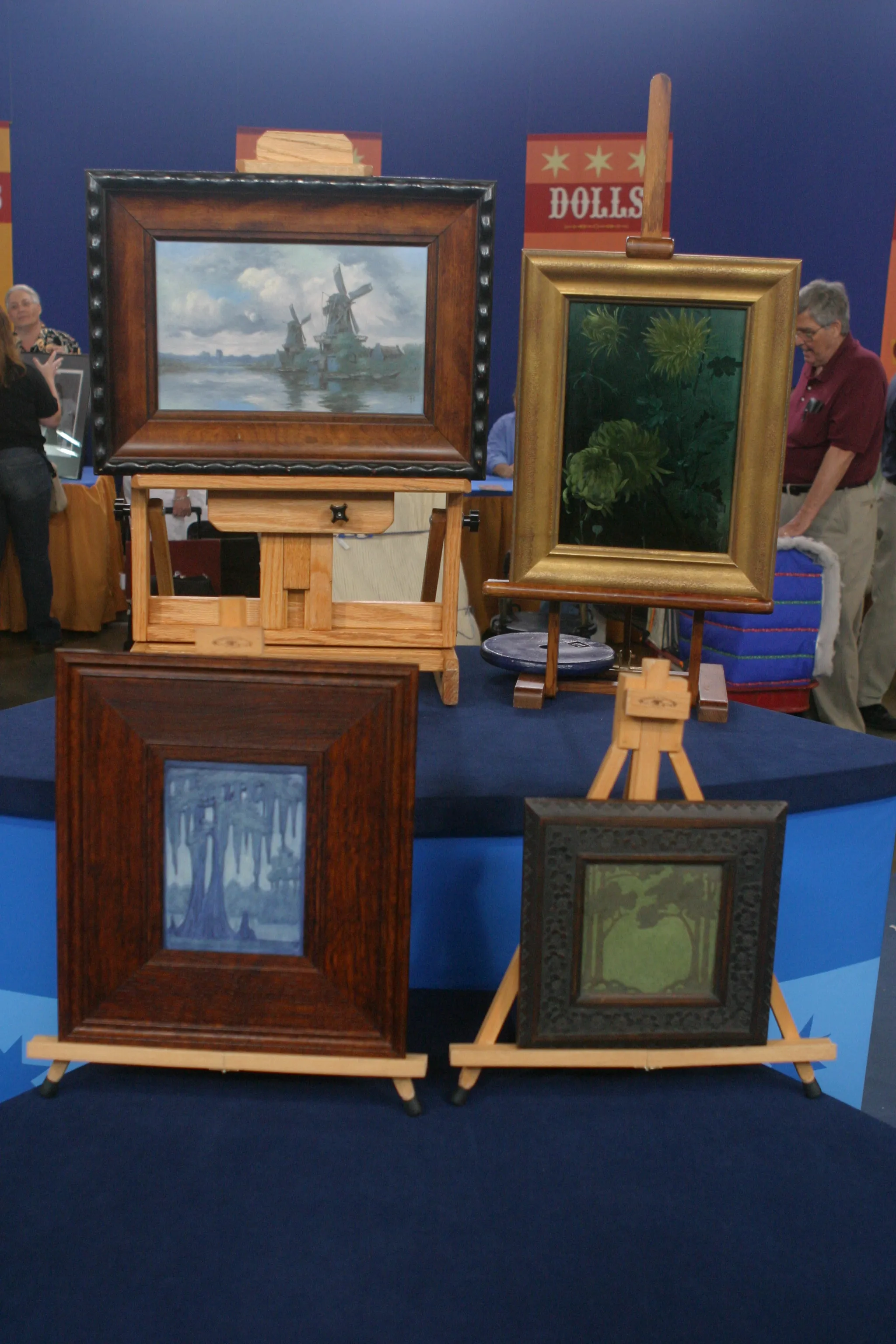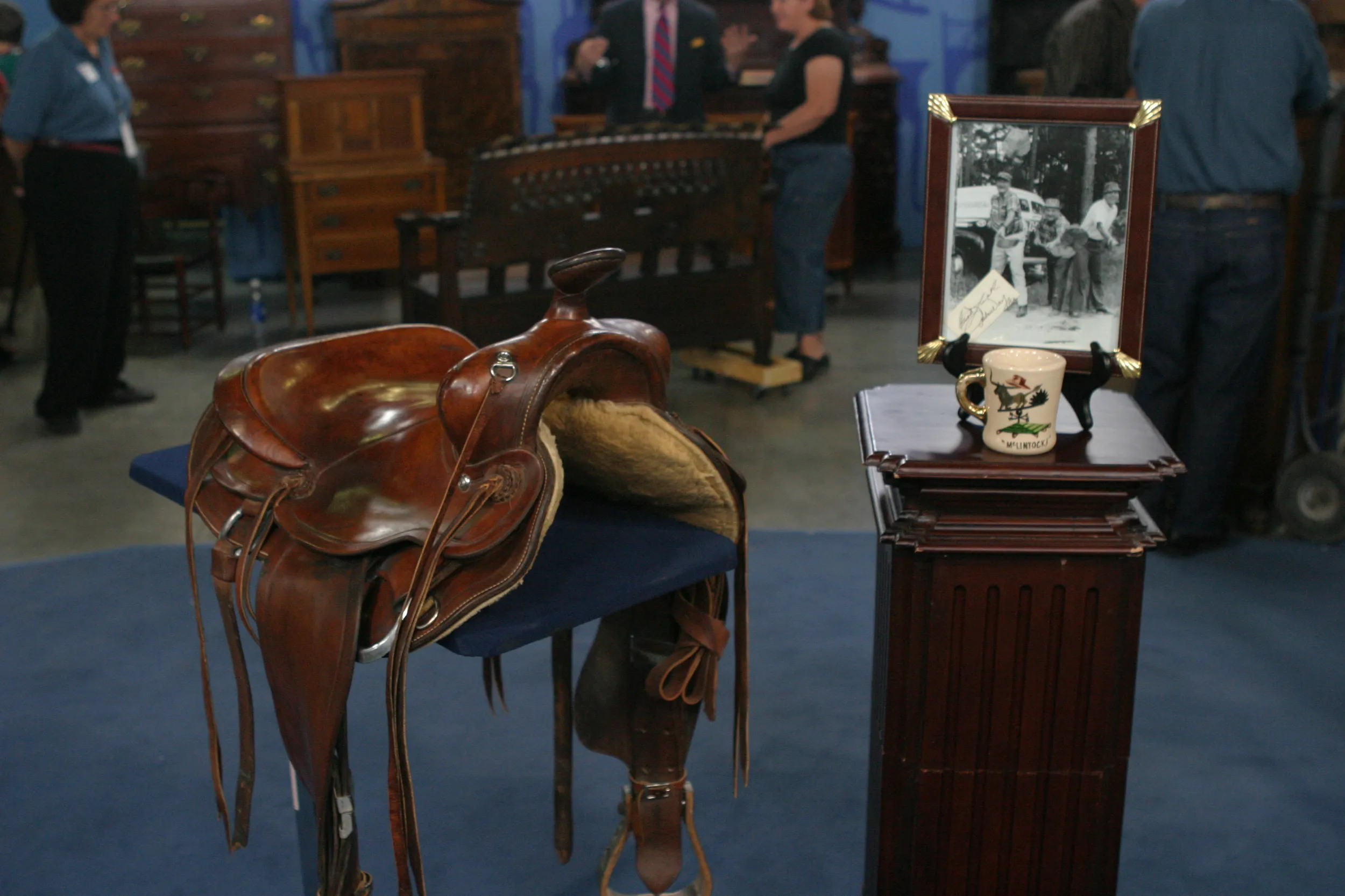GUEST: I brought what I believe to be is a Tiffany inkwell that belonged to my aunt, my favorite aunt. I can say that now 'cause they're all gone. And I don't know much about it other than it does say "Tiffany" on the bottom, and it's been a favorite piece of mine she had since I was a child, and I, when she passed away, I asked for it, and they let me have it. I'm very familiar with this.
APPRAISER: It's a very lovely inkwell made by Tiffany, and what's interesting about it and what makes it rare is that it's a mosaic inkwell. The production was more limited than on the other inkwells that were made, that were usually parts of larger desk sets.
GUEST: Mm-hmm.
APPRAISER: I've seen, probably, over the years, about four or five of them. And every one of them is different, because the work that you see, all of this beautiful inset glass tile, which was made by Tiffany, also, is inset slightly different. I've seen them with Cypriot glass tile. I've seen them with the tile that looks a little more like this. But one of the things that I've always noticed is that the color gradates. So it's usually a little brighter at the top, and then it gets darker as it approaches the bottom.
GUEST: I've never noticed that.
APPRAISER: This does have some condition issues, where you're missing two tiles. That is a bit of a problem, although it can be restored or conserved. But it needs to be restored with the tiles that are going to match the others. And it has to be done by a professional conservator who knows how to make the tiles actually adhere. It's not just a question of sticking glue on and sticking them in. It doesn't work that way. And that will affect the value in some way. Some collectors would just buy it in the condition it's in and say, "I don't want anything done to it." But others would prefer to have it look as though it were brand-new.
GUEST: Mm-hmm.
APPRAISER: Now, there's one other condition issue, which is the top of the inkwell, which seems to have been pushed down. Did this something happen in your house?
GUEST: Not as long as I had it. It was that way since I was a child and my aunt had it. It's always had that condition.
APPRAISER: Okay. Well, as I lift it out, I'm going to show you. I'm going to turn it on its side. Now, also in addition to the bronze liner, you also have a glass liner, and this looks like there was ink used in it a long time ago, and it's still there. And it's not really important whether you clean it out or not. Now, you showed me a signature on the underside of the piece, but there's also a signature here. Not only does it say "Tiffany Studios, New York," but it also has a monogram for Tiffany Glass and Decorating Company, which was the earlier company that Tiffany established in the 1890s, where a lot of the mosaic work was actually done.
GUEST: Oh, okay.
APPRAISER: Most of these inkwells that I've seen are marked that way. So we know they're early. We know they're circa 1900. In its present condition, whether it's in a retail venue or in an auction venue, it's worth $15,000.
GUEST: Whoa. (chuckles)
APPRAISER: If you were to have it conserved-- it probably could cost close to $1,000 just to do all the work-- then it probably could be worth easily $20,000.
GUEST: Wow.
APPRAISER: Now, if it were absolutely perfect, it would go for anywhere between $25,000 to $30,000.
GUEST: Goodness. Wow.
APPRAISER: So...
GUEST: That's a lot of ink.
APPRAISER: That's a lot... (chuckling) Right. Exactly. And it's a beautiful piece, and I was really excited to see it, because they are really quite rare.
GUEST: Thank you very much.
APPRAISER: You're very welcome.












